Recreating the Country blog |
|
European culture and its battle with nature 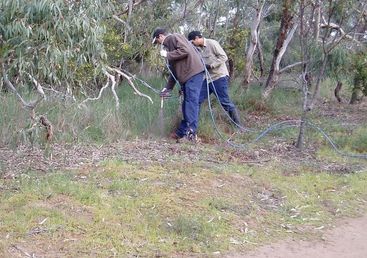 Spraying invasive weeds is an annual battle to protect remnant grassland plants Spraying invasive weeds is an annual battle to protect remnant grassland plants As an ecologist and a manager of flora and fauna reserves I seem to spend a lot of my time battling against the forces of nature. For example each of the three reserves that I help to manage has problem weeds that have to be suppressed with herbicides each year. This is to prevent them from spreading and over running the remnant native plants. Ironically the spraying kills some of the native grasses and herbs that we are trying to protect. Spraying is also very expensive ($1000/day) but we seem to be locked into an endless annual cycle of herbicide spraying in a fight with nature, from which there appears to be no retreat. Since the beginning of white settlement in Australia, battling nature has been our chosen way of life. Richard Howitt wrote in 1845 in 'Impressions of Australia Felix'; "Day after day it was no slight army of trees against which we had to do battle. We had to fight hard with them to gain possession of the soil, for the trees in those days were giants" Howitt was describing the beginnings of 170 years of clearing trees from the Australian continent which sadly is still going on full steam ahead in some states. There is no doubt that many Australians still see the environment as an enemy that has to be beaten into submission or at least subdued. The First Australians partner with nature 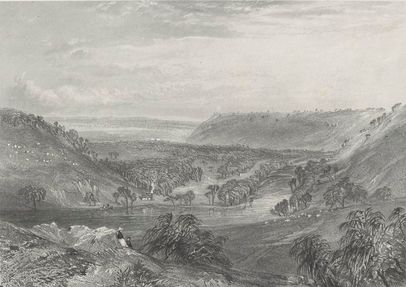 An 1874 image of the Barwon River at Fyansford by Edward Paxtman Brandard showing patterns of trees created by indigenous burning. Gammage explains how this design was both ecologically sensible and aided hunting. State Library of Victoria An 1874 image of the Barwon River at Fyansford by Edward Paxtman Brandard showing patterns of trees created by indigenous burning. Gammage explains how this design was both ecologically sensible and aided hunting. State Library of Victoria It makes more sense to work with nature than to do battle against her. Becoming a partner with the most powerful force on earth has clear advantages, but is it possible? T0 the First Australians nature and nurture are inseparable. Partnering with nature is so deeply embedded in their culture that it is impossible for them to feel whole as people without maintaining a tangible connection. This connection with 'country' goes far beyond the love and empathy for familiar places that I often feel for the place I live, it's a deep and complex spiritual connection that sadly goes well beyond my powers of comprehension. Bill Gammage on page 131 of 'The Biggest Estate on Earth' quotes Strehlow to give some insights into this spiritual relationship; "the overwhelming affection felt by a native for his ancestral territory - mountains and creeks and springs and water-holes are to him not merely interesting or beautiful but the handiwork of ancestors from whom he himself has descended. He sees recorded in the surrounding landscape the ancient story of the lives and deeds of the immortal beings whom he reveres. The whole countryside is his living age old family tree." The ancient art/science/spiritualism of cool burning 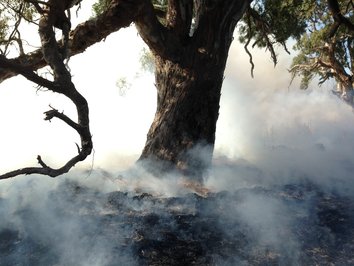 Wiyn-murrup yangarramela - ‘fire spirit comes back’. Wiyn-murrup yangarramela - ‘fire spirit comes back’. Two events that I attended recently brought me a little closer to understanding this deep spiritual connection that the First Australians have with nature. Both involved fire and both were profoundly moving experiences. This blog will describe the first of these events. The second event will be described in the June blog. Wiyn-murrup yangarramela is Wada Wurrung (Wathaurung) for ‘fire spirit comes back’. Hearing this ancient phrase spoken at Bakers Lane Reserve, Teesdale was the prelude to what was planned for this 4ha reserve in the next few hours. It was a process, a ritual, a ceremony and a celebration that this grassy woodland had not experienced for over 180 years. It was the beginning of the ancient practice of indigenous burning lead by Ngarigo elder from the Snowy Mountains, Uncle Rod Mason. He had practiced his craft for 53 years and had started as a boy in his homelands in the western desert. 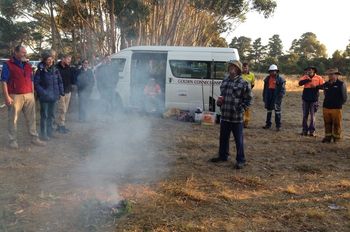 Ngarigo elder from the Snowy Mountains, Uncle Rod Mason preparing the group for the indigenous practice of cool burning Ngarigo elder from the Snowy Mountains, Uncle Rod Mason preparing the group for the indigenous practice of cool burning It had been a dry summer and April 4th dawned as the perfect windless day for a burn though the forecast was for a warm day in the high twenties. So the planned afternoon burn was brought forward to a 7am start to avoid any safety risks associated with a warm afternoon. A small 'camp' fire was burning and people were gathering, some in casual clothes around the fire and others in CFA yellow protective overalls around the fire trucks. Before the burn we were welcomed to 'country' by Wada Wurrung Elder Uncle Bryon Powell. He explained that the smoke from the branches of Cherry Ballart and River Red Gum were symbolic. The smoke was to clear away any negativity that we may have brought with us, the parasitic Cherry Ballart reminded us of the importance of giving back to the land that nurtures us and the mighty River Red Gum would give us strength. A dark skinned man in his 60's wearing jeans and a checked jacket stepped to the centre of the circle of people and comfortably spoke about the day ahead. This was Uncle Rod Mason who held the knowledge about indigenous burning and its benefits to 'country'. "This is a safe technique and today 's workshop will help build your confidence" he said. Uncle Rod was watching the smoke from the fire and was waiting for the first breeze to come with the sun rise 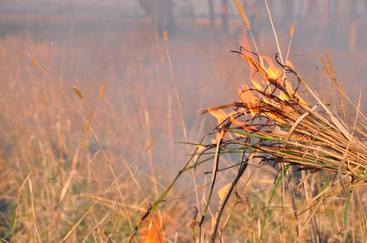 The Wada Wurrung lit patches from the main fire with dry burning grass. Photo Tracey McRae The Wada Wurrung lit patches from the main fire with dry burning grass. Photo Tracey McRae By 7.30 as predicted we had a breeze from the north, so the group moved to the southern end of the reserve where Uncle Rod walked into the long grass and started lighting a clump of grass with a cigarette lighter. Quickly the Wada Wurrung onlookers joined in and numerous patches of burning grass began crackling. The ancient practice of cool burning had begun. Cool burning - how it was done 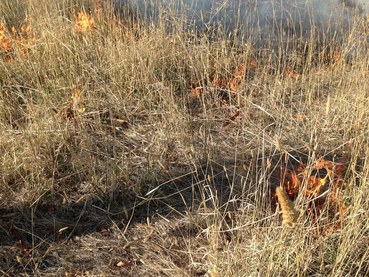 Small fires were spaced about one metre apart. This close spacing was important to keep the burn cool Small fires were spaced about one metre apart. This close spacing was important to keep the burn cool The process was simple as Uncle Rod explained. Keep the wind to your back and light patches of grass about 1 m apart. So the indigenous burners backed into the long grass lighting up patches with handfulls of dry grass that were lit from the main fire. At this time I made a few interesting observations - the fire was cool, patchy, there was not much smoke and it was not threatening. People were standing within a few meters of the cracking grass and chatting. It was a very friendly social occasion, a shared and connecting experience. Burning the allotted 3ha took about 3 hours and it was fun with most of the people having a go at lighting up. My only discomfort was a few singed hairs on the back of my right hand. The CFA also joined in but started to vary the pattern and spaced the fire patches further apart to between 5 - 10 m. This simple variation made the fire much hotter and chatting onlookers began to move further back. I mentioned this to Uncle Rod who by this time was burning 50 m away from the CFA. He knew their fire was hotter because the smoke was black. "We want to keep the charcoal on the ground to protect and insulate the soil on hot days. The smoke should always be white for a burn to revitalise the ground" he said. 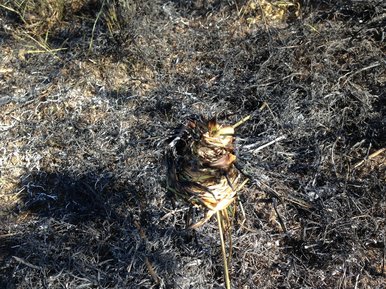 Long grass is knotted to prevent it flaring and burning a young River Red Gum. Long grass is knotted to prevent it flaring and burning a young River Red Gum. At this moment he bent down and put his hand flat on the burnt ground and then pointed to a small spider that was scurrying across the sooty newly burnt surface. "This ground is already cool and the burn will make the land fresh and healthy again. Fire should move across the ground like trickling water and as the slow burn moves, wildlife can move away because they have plenty of time. The burn should be cool enough for insects to survive and there should be no scorch marks on the trees" he said. From our conversation I understood that annual cool burns would return an ecological balance of plant, insect and animal species to make this place healthy again. Would this process of regular cool burning 'clean up' the weedy plants that I have been fighting against for decades? When the indigenous burn was completed, the CFA used their technique to burn a 1 ha section to the north of the reserve. The two styles of burning would demonstrate differences in the recovery of the two sites. Dale Smithyman from the Golden Plains Shire who had organised the event wanted to observe the varying patterns of plant species and plant density that would emerge after the burn. The CFA burn for comparison 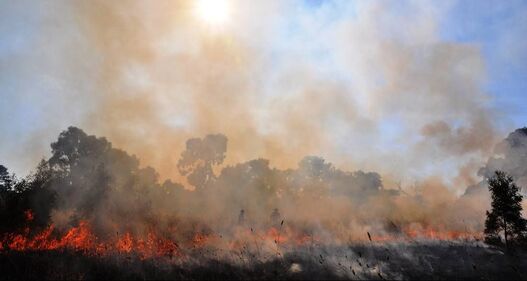 The CFA lit a line of fire with their drip torches. This method produced a hotter fire and a lot of black smoke. Photo Tracey McRae The CFA lit a line of fire with their drip torches. This method produced a hotter fire and a lot of black smoke. Photo Tracey McRae We were standing to the south of the CFA burn and watched as the line of flames on the far north side leapt into the air. The flame height was two - three times higher and thick black smoke filled the air. Very quickly the onlookers were moving to safety because the flames were hot and the air was pungent and hard to breathe. The burn was over within thirty minutes but what had been a convivial and relaxed ambiance was now changed. Uncle Rod was watching with the rest of us so I asked him for a comment. "After the indigenous burn the ground will take 2 weeks to recover, but after that hot burn the ground won't recover for 3 months", he said. We assembled back at the Teesdale Hall for lunch and some talks about the culture of burning from members of Wada Wurrung community. However before the guest speakers could begin we had a long wait for CFA who had stayed back at the burn site to make it safe by doing some 'mopping up'. When they finally arrived I overheard one of the CFA chiefs confiding in another; "you know Tony, the indigenous burn may have taken longer but there was no mopping up". Tony nodded. "we spent all our time mopping up around the CFA burn and making it safe and we'll probably be back tomorrow". The same CFA officer added "the indigenous burn may have taken three times as long but there was no mopping up needed so overall the two methods took about the same time but the indigenous burn was much safer", Tony once again nodded his agreement Richard McTernan, Co-ordinator of Wooragee Landcare recently (Feb 2020) sent these insightful comments. Thankyou to Tracey McRae for the beautiful photographic record of the cool burn below; Ancient Australian culture - Welcome to country smoking ceremony in June
12 Comments
Gib Wettenhall
17/5/2017 10:27:49 am
Really interesting and absorbing reading. An inspiring initiative. I'm going to suggest at the next Ballarat Region Treegrowers meeting that we commission the Wada wurrung to manage a cool burn at the ImLal biorich plantation.
Reply
Steve Murphy
17/5/2017 11:18:45 am
Thanks Gib,
Reply
Hedley Thomson
5/12/2017 09:16:25 pm
So sensible and so possible in so many of our reserves.
Reply
Richard Gilbert
12/10/2018 01:56:31 pm
As an ex CFA operative I appreciate the difference between hot and cool burns.
Reply
Steve
13/10/2018 10:56:53 am
Hi Richard,
Reply
Thanks for the interesting read. I had wanted to attend this event myself but circumstance made that impractical.
Reply
steve
19/10/2018 06:44:23 pm
Thanks for those comments Ev. The burn was organised by Dale Smithyman, the very excellent natural resources officer for the Golden Plains Shire. Dale wanted to observe if there were differences in the response of the ground flora to the different burning styles.
Reply
I read a lot of posts but the topic covered in this is the most comprehensive & helpful. This is really wonderful post. I would definitely recommend it to others. Thank you for sharing this valuable information with us.
Reply
Cameron Reid
23/9/2020 10:35:22 am
Hi there
Reply
Steve
23/9/2020 12:51:07 pm
Hi Cameron,
Reply
John Stafford
9/7/2024 04:47:21 pm
As white Europeans, when will we even begin to appreciate the complexity involved in being fully engaged with our natural environment? Yes cool burning seems to be an art that our fire authorities are yet to add to their skills sheet. But are any of us even vaugely aware of the very fundamental, yet complex biological "engineering" that is the result of cool burning?
Reply
Leave a Reply. |
Click on the image below to discover 'Recreating the Country' the book.
Stephen Murphy is an author, an ecologist and a nurseryman. He has been a designer of natural landscapes for over 30 years. He loves the bush, supports Landcare and is a volunteer helping to conserve local reserves.
He continues to write about ecology, natural history and sustainable biorich landscape design. 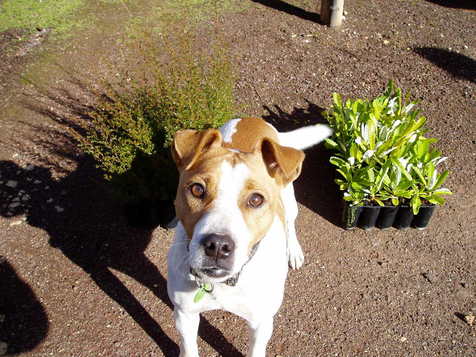
|
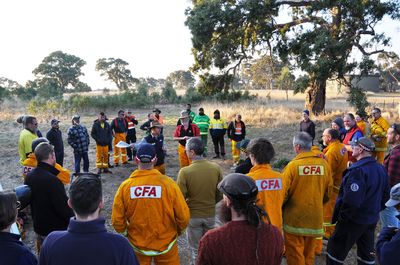
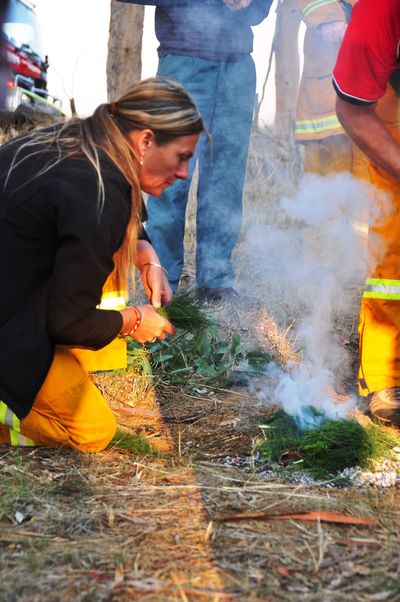
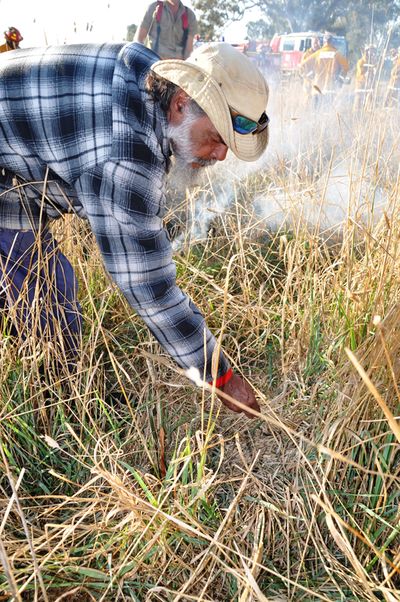
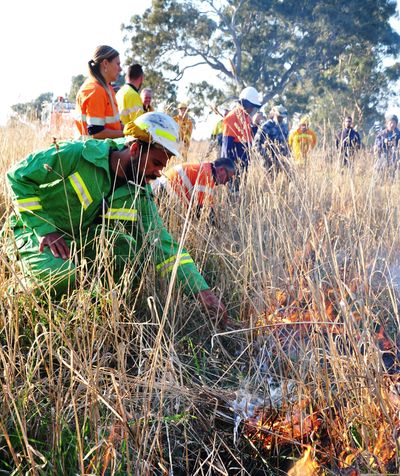
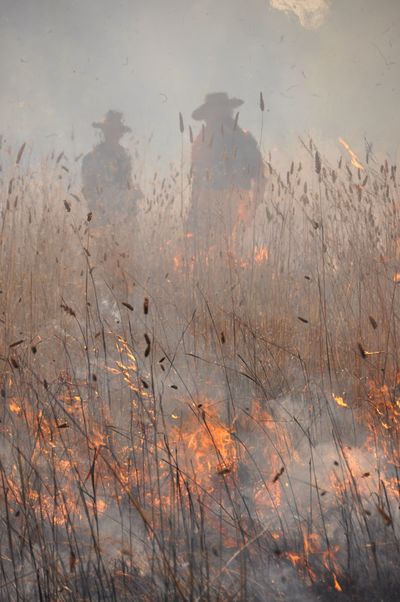
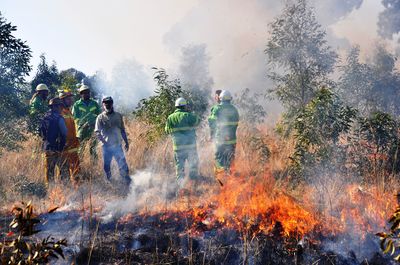
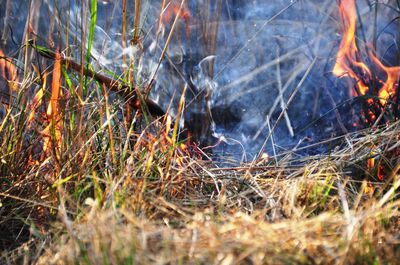
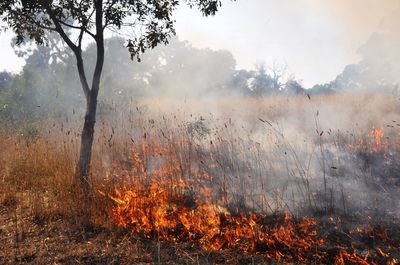
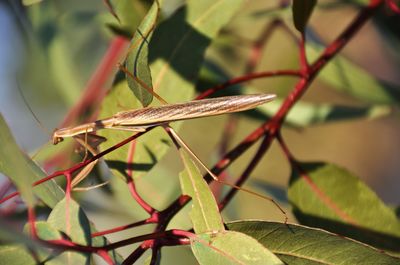
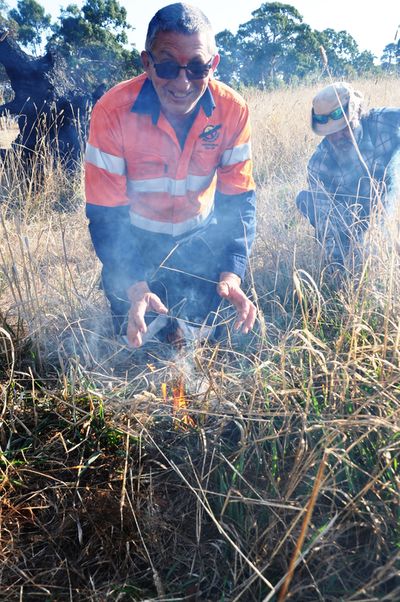
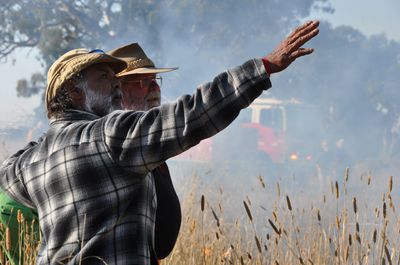
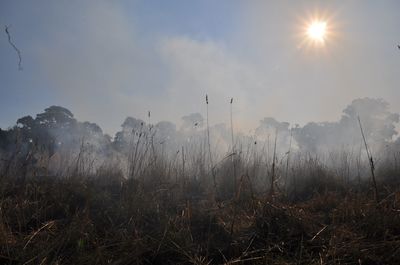
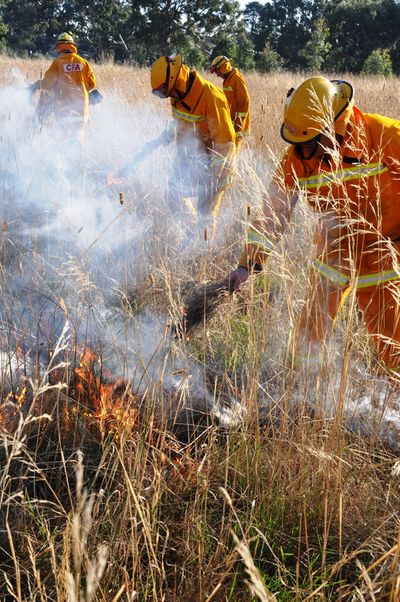
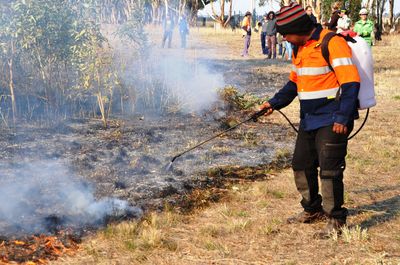
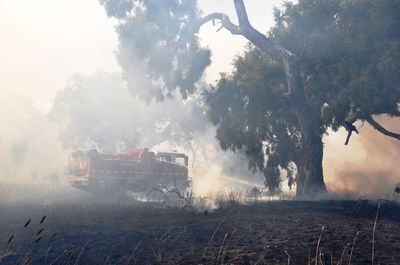
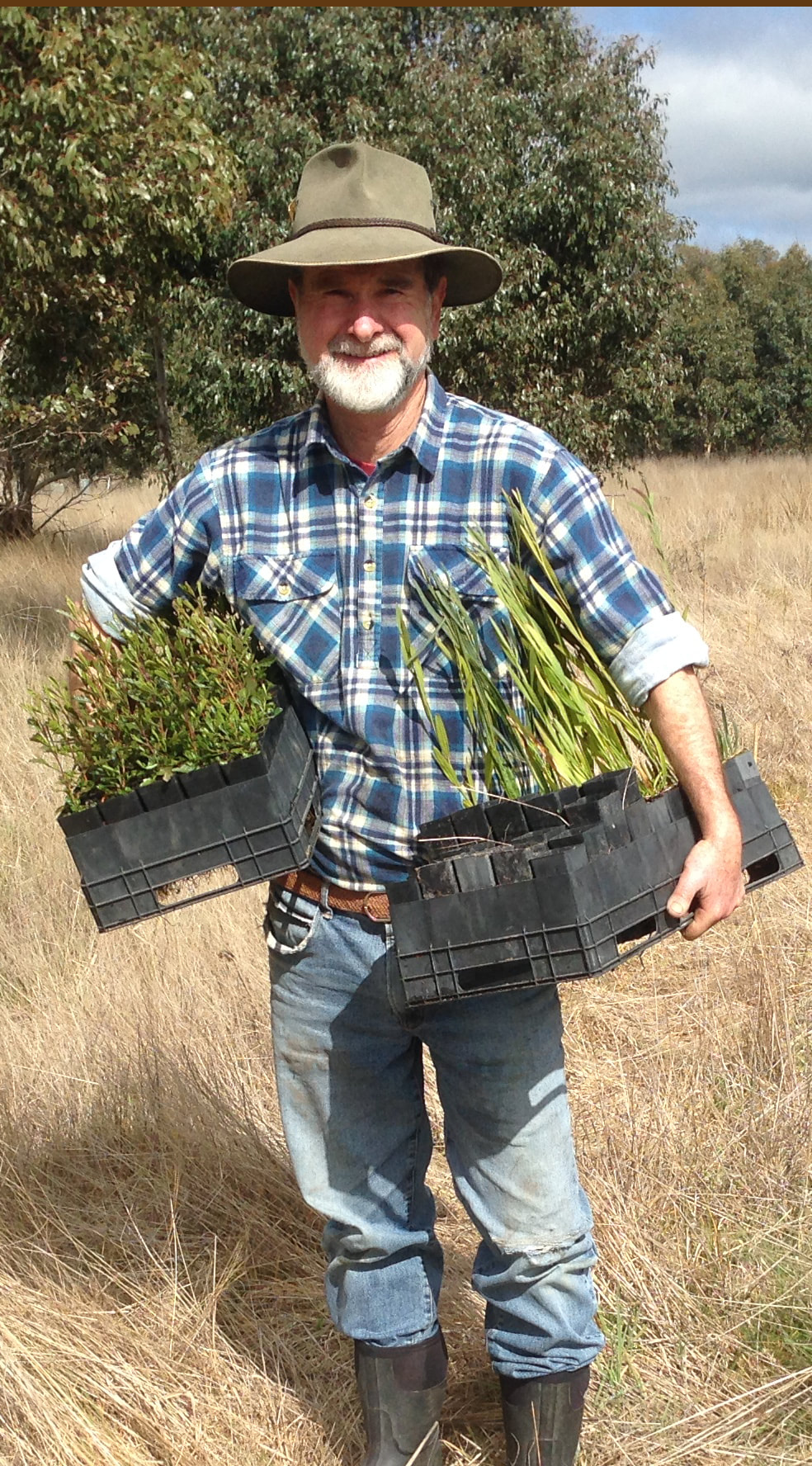

 RSS Feed
RSS Feed
